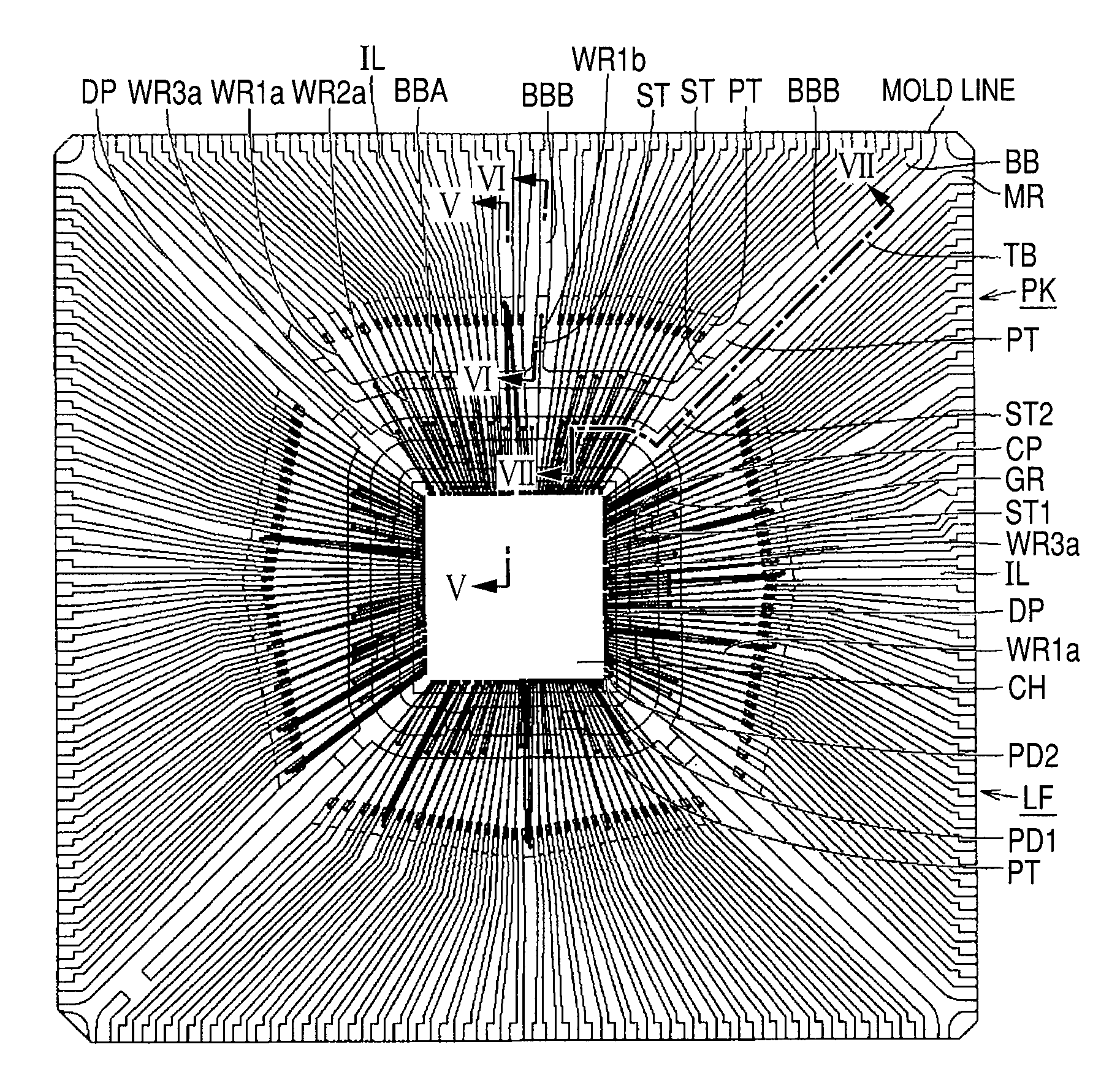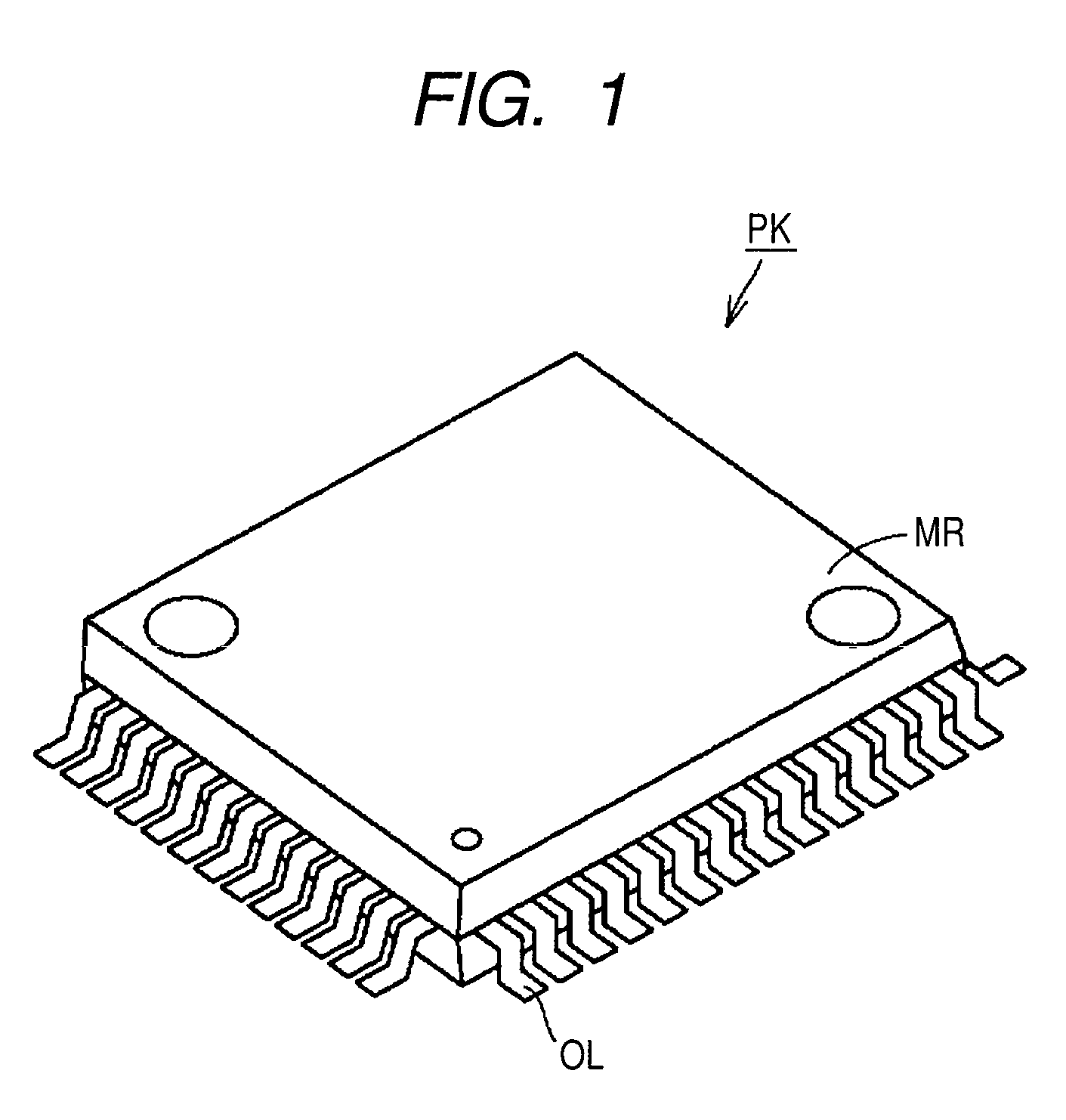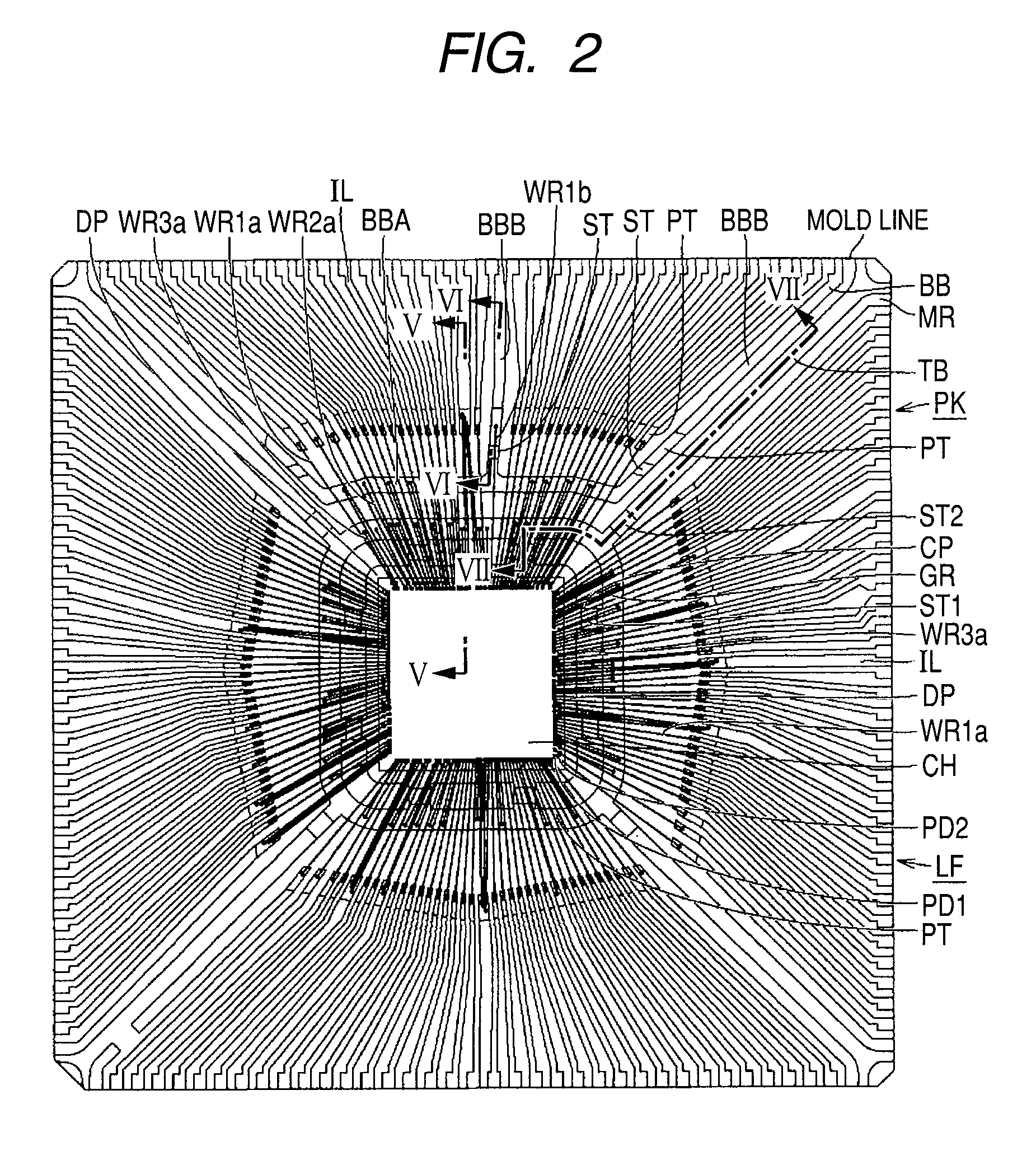Semiconductor device and manufacturing method therefor
a technology of semiconductor devices and manufacturing methods, applied in semiconductor devices, semiconductor/solid-state device details, electrical apparatus, etc., can solve the problems of reducing the spacing between wires, prone to electrical short circuit, and inability to bring close to chips, so as to suppress the bonding wire and prevent the bonding wire from colliding. , the effect of reducing the impact of the collision
- Summary
- Abstract
- Description
- Claims
- Application Information
AI Technical Summary
Benefits of technology
Problems solved by technology
Method used
Image
Examples
first embodiment
[0036]FIG. 1 is a perspective view schematically illustrating the configuration of a semiconductor device in the first embodiment of the invention. As illustrated in FIG. 1, the semiconductor device in this embodiment is a transfer mold type plastic package PK, for example, QFP (Quad Flat Package). In this type of package PK, outer lead portions OL are protruded from all the four sides on the circumference of sealing resin MR.
[0037]FIG. 2 is a schematic plan view illustrating the interior of the package PK illustrated in FIG. 1 as seen though the sealing resin. FIG. 3 is an enlarged view of FIG. 2 and in this drawing, bonding wires bonded to the inner lead portions are omitted. FIG. 4 is an enlarged view of FIG. 2 and in this drawing bonding wires bonded to the power supply bar or the GND ring are omitted. FIG. 5, FIG. 6, and FIG. 7 are schematic sectional views respectively taken along line V-V, line VI-VI, and line VII-VII of FIG. 2.
[0038]FIG. 6 illustrates a section of only the p...
second embodiment
[0079]FIG. 15 is a schematic plan view schematically illustrating the configuration of a semiconductor device in the second embodiment of the invention, illustrating the interior of the package as seen through sealing resin. FIG. 16 is a schematic sectional view taken along line XVI-XVI of FIG. 15. As illustrated in FIG. 15 and FIG. 16, for example, two semiconductor chips CH1, CH2, a lead frame LF, and bonding wires WR1a to WR3a, WR4, WR1b are arranged in the sealing resin MR in the package PK. The two semiconductor chips CH1, CH2 are stacked together.
[0080]In the upper face of the semiconductor chip CH1 positioned on the lower side, bonding pads PD1 to PD3 arranged in three rows along the outer edge are formed. Of the bonding pads in three rows of the semiconductor chip CH1, the bonding pads PD3 on the innermost row are electrically coupled with bonding pads PD4 of the semiconductor chip CH2 through bonding wires WR4.
[0081]As in the configuration in the first embodiment, the lead ...
third embodiment
[0102]FIG. 18 is a schematic plan view of the configuration of a semiconductor device in the third embodiment of the invention, illustrating an area in proximity to a parallel running portion of the power supply bar in FIG. 4 in closeup. In the configuration in this embodiment, as illustrated in FIG. 18, bonding wires WR1b are bonded not only to the jutted portion BBA of the power supply bar BB but also to a parallel running portion BBB. That is, a bonding wire WR1b is also bonded to a parallel running portion BBB sandwiched between two inner lead portions IL and extended in parallel with the adjoining inner lead portions.
[0103]In the description of this embodiment, the following case is taken as an example: a case where a bonding wire WR1b is bonded to the parallel running portion BBB coupled in the intermediate position, not at both ends, of the jutted portion BBA among the three parallel running portions BBB coupled to the jutted portion BBA. This bonding wire WR1b is bonded to t...
PUM
 Login to View More
Login to View More Abstract
Description
Claims
Application Information
 Login to View More
Login to View More - R&D
- Intellectual Property
- Life Sciences
- Materials
- Tech Scout
- Unparalleled Data Quality
- Higher Quality Content
- 60% Fewer Hallucinations
Browse by: Latest US Patents, China's latest patents, Technical Efficacy Thesaurus, Application Domain, Technology Topic, Popular Technical Reports.
© 2025 PatSnap. All rights reserved.Legal|Privacy policy|Modern Slavery Act Transparency Statement|Sitemap|About US| Contact US: help@patsnap.com



